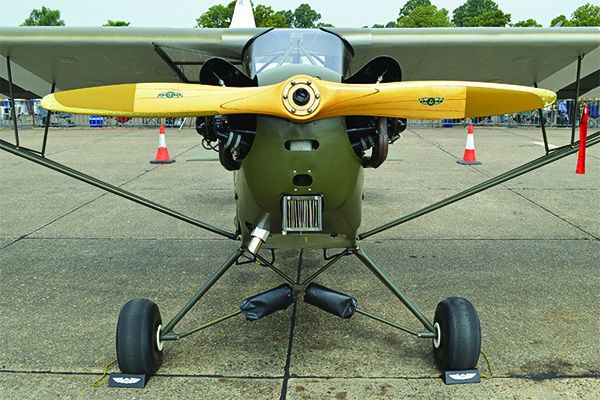My old, long-gone flight instructor was maniacal about prop inspection (“Preflighting Propellers,” August 2020). Here in Boston, when we conducted preflight in the dead of winter, he would rotate the prop with a peculiar hand and foot arrangement that was “proper” in case of starting. Keys were always on top of the dash so we could see them walking around. Before touching the prop we looked for the keys as part of the process.
I have thought about this over the years and have come to the conclusion that if it is too cold for the engine to be turned over with the starter (he drew it through 360 degrees, I think to assure it was not stuck from the cold), then it is too cold for me to fly.
I am glad that this article addresses rotating the prop as part of preflight—DON’T!
Cary Conrad – Via web site
INADVERTENT START
I was always taught to run my fingers the length of the propeller blade to check for nicks, corrosion, or whatever that should not be there. A fixed-pitched propeller is nothing more than an airfoil and should be inspected thoroughly. When one prepares to prop an airplane, be it a dead battery, or no battery, particular attention must be paid, as a broken p-lead on a magneto can cause a real problem for the one moving the blade. I have on one occasion, positioned my hands vertically to move the prop into the 10 o’clock position for propping, and have the engine start. I was way too close for comfort, but I was happy I had my body weight and feet positioned so with the propeller turning at idle, I did not lose any body parts. A propeller is ALWAYS hot. Care must be taken anytime it is moved.
Patrick Piper – Via web site
PROPELLER INSPECTION
I am a CFI and I have a real life story to share about preflighting propellers that happened to me. I was taught to preflight propellers just like the article says: hub, spinner, leading edge of the blades. I had a mechanic to file a prop a few times after a preflight.
One day I was preflighting an airplane I was going to purchase. This was a pre-buy test flight. There was another local CFI with me well familiar with this particular airplane. I took my time to get a thorough preflight by the book. I checked the prop too: hub, spinner, three leading edges—all good.
We went for an uneventful test flight that included comparing climb and cruise performance with AFM—all was good and I gave a green flag for a pre-buy/annual inspection.
My mechanic made a full-power run-up and noted static rpm was slightly low as the only minor discrepancy, and then put the airplane in the hangar for an oil change and compression check. As they started measuring compression while spinning the prop by hand, they noticed signs of a prop strike! One blade was missing ¼-inch of length at the tip, and all three tips had chordwise scoring.
When I did my prop preflight and I was moving my finger along the leading edge, I pulled it off the prop maybe an inch from the point where I would find the damage. The airplane had an unreported hard landing a day before we flew, and we ended up flying an unsafe airplane after we did all we were taught to do to confirm airworthiness.
Run your finger all along the leading edge of the prop and then over the tip too!
Dmitry Korotkov – Via web site
CORRECTION SECTION
I’m sure many will write about this, but the nice graphic on page 18 in the August 2021 issue has a mistake I believe in the altitudes. The article text is correct, but in the figure or illustration it says 100 to 400 feet AGL a 90-degree turn is permissible. I’m pretty sure this is not what you mean based on common sense and what the text says.
Andrew Doorey – Via email
You’re right; the graphic has a typo in it, thanks to a production error. It should read 400-700 feet agl. A corrected image is published on page 32. Thanks!




